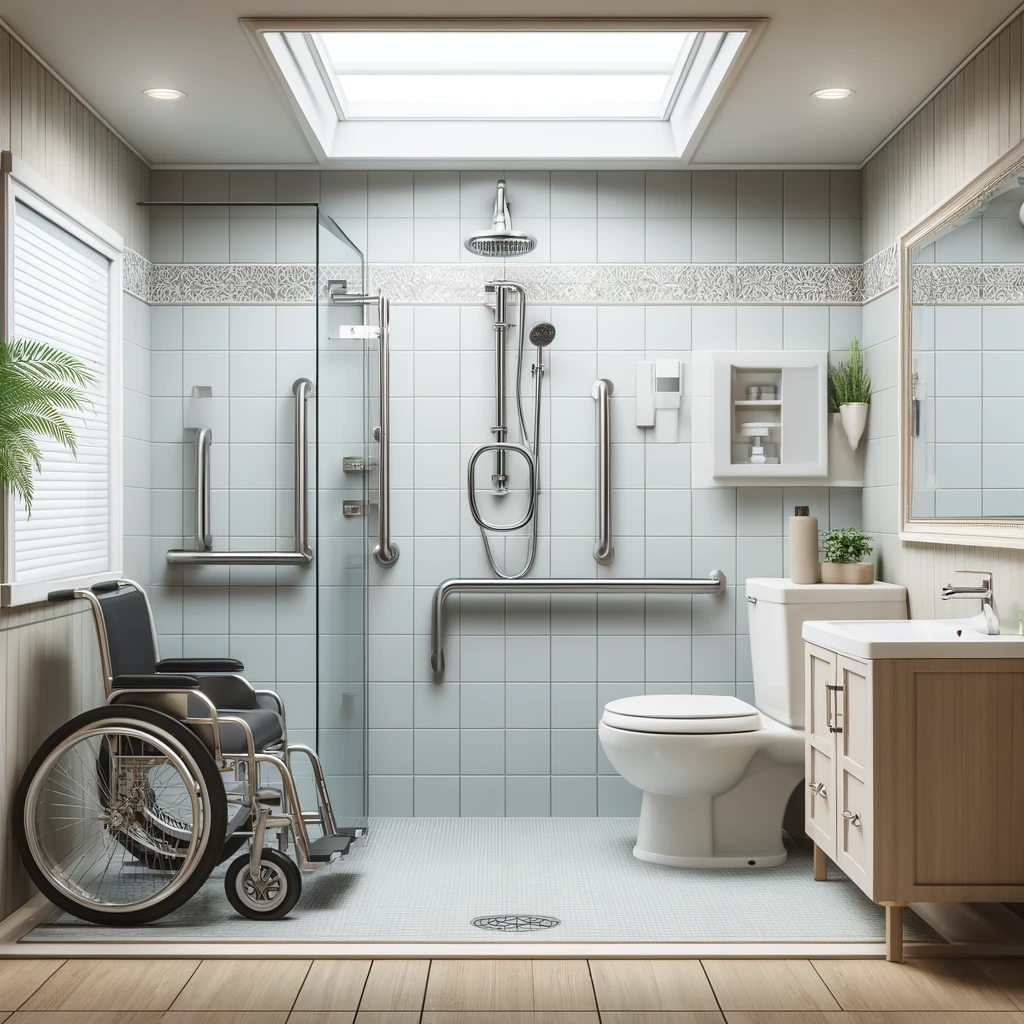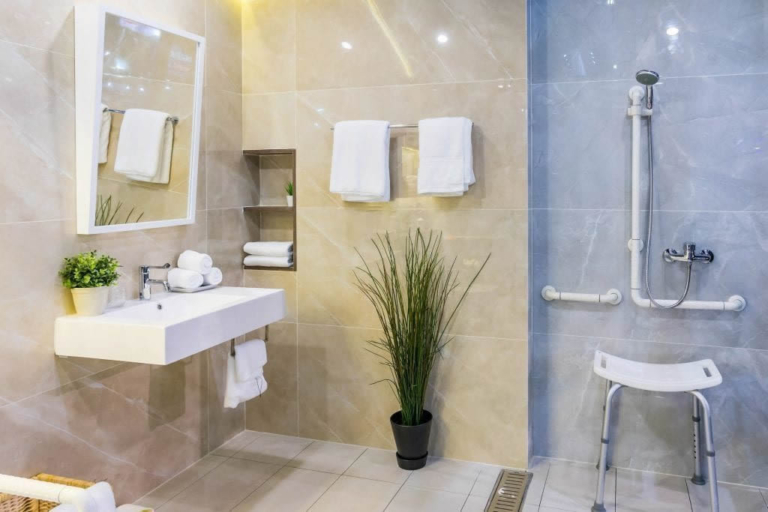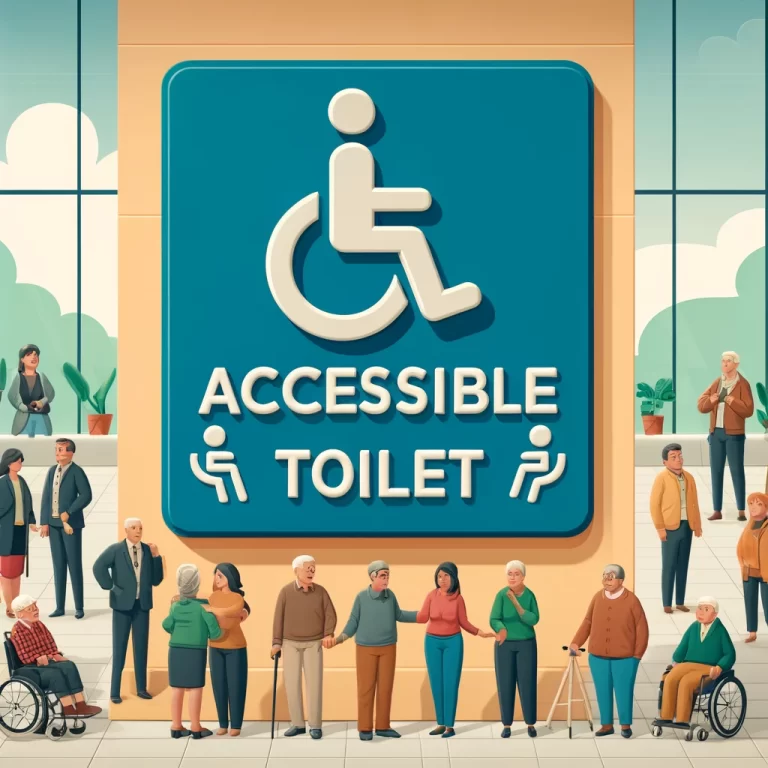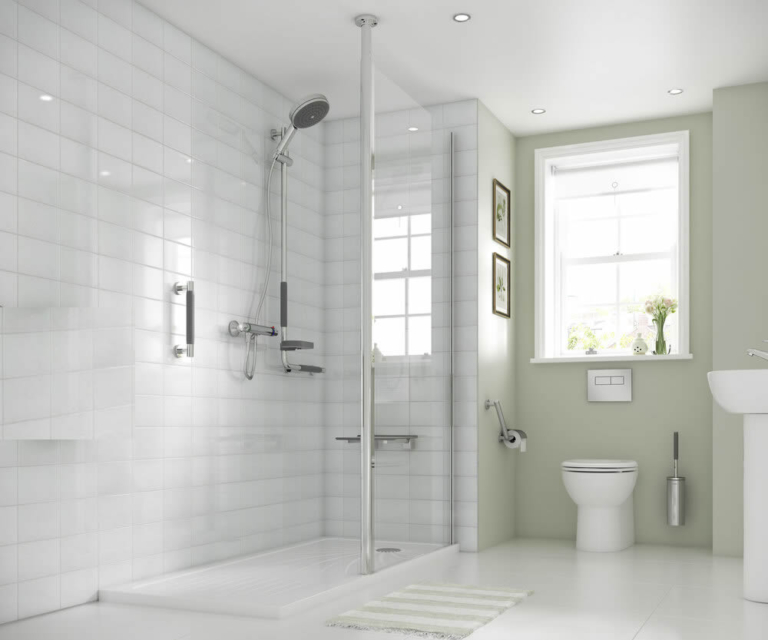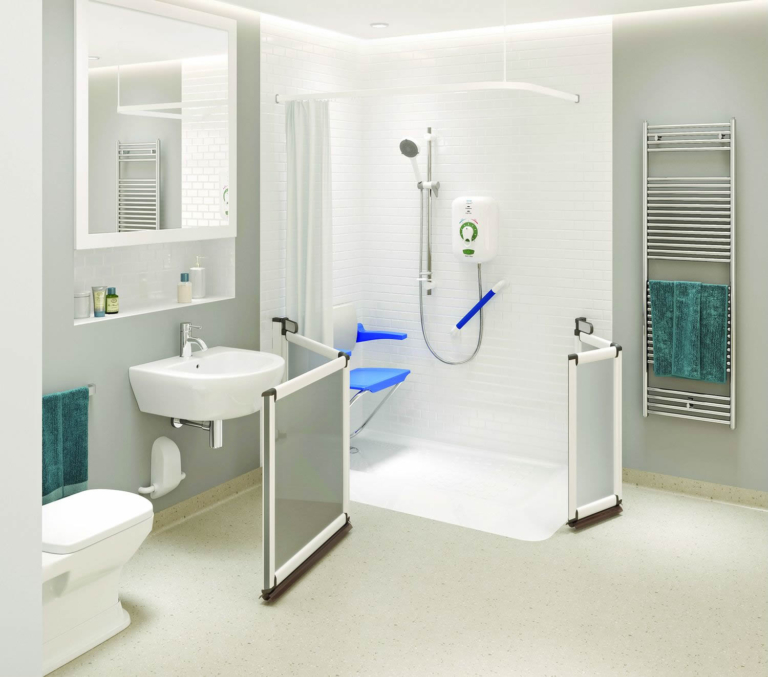Is it illegal to not have a disabled toilet
Are you aware of the requirements for a disabled toilet?
We will discuss the essential features that make a toilet accessible for individuals with disabilities. From size and accessibility to grab bars and handrails, we will explore the necessary elements that must be in place.
Delve into the legal implications of not having a disabled toilet, including fines, legal action, and the negative impact on customers and employees.
Learn how you can make a toilet accessible for all individuals.

What is a Disabled Toilet?
A disabled toilet, also known as an accessible washroom, is a toilet specifically designed to cater to the needs of individuals with disabilities, ensuring they have adequate facilities and access as mandated by regulations such as the Equality Act 2010 in the UK.
These toilets are equipped with handrails, emergency pull cords, and often have more space to manoeuvre for those using mobility aids such as wheelchairs or crutches. The layout and design of a disabled toilet are carefully planned to provide maximum comfort and accessibility for users with various disabilities, ensuring a safe and hygienic environment. These facilities play a crucial role in promoting inclusivity and equality by offering a dignified experience for all individuals, regardless of their physical abilities.
What are the Requirements for a Disabled Toilet?
The requirements for a disabled toilet encompass specific criteria related to size, accessibility, and features such as grab rails and handrails, in accordance with building regulations to ensure the needs of wheelchair users and individuals with disabilities are met.
These toilets need to be large enough to accommodate wheelchair users comfortably, with adequate space for manoeuvring. Accessibility features like handrails, raised toilets, and emergency pull cords are essential for providing a safe and inclusive environment. Compliance with building regulations, such as the Americans with Disabilities Act (ADA) in the United States, is crucial to meet the legal standards for accessibility. The presence of grab rails in strategic locations within the toilet area is vital to assist individuals with mobility challenges when transferring to and from the toilet.
Size and Accessibility
The size and accessibility of a disabled toilet are crucial considerations to accommodate wheelchair users and individuals with disabilities while adhering to structural limitations and accessibility requirements.
Design considerations play a significant role in ensuring that disabled toilets are properly equipped and convenient for users with varied needs. The layout and features should comply with regulations such as ADA (Americans with Disabilities Act) to provide adequate space for wheelchair manoeuvrability and accessibility aids. Spatial requirements are fundamental to allow easy movement within the toilet, and installations like grab rails, accessible basins, and properly positioned toilet roll dispensers are essential for user comfort and safety.
Grab Bars and Handrails
Grab rails and handrails in an accessible toilet provide essential support and assistance for individuals with mobility challenges, ensuring safety and accessibility in wheelchair-accessible facilities.
These robust fixtures are strategically placed to offer stability for those needing help with balance or movement. Grab rails can be found near toilets, showers, and sinks, giving users added confidence and independence. The presence of handrails is crucial for manoeuvring in and out of the toilet area safely, especially for wheelchair users or individuals with limited mobility.
Toilet Height and Accessibility
The toilet height and accessibility features in a disabled toilet are designed to comply with regulations such as the Equality Act 2010, ensuring ease of use and comfort for individuals with disabilities.
One crucial aspect is the toilet height, which should be set at a standardised range to accommodate wheelchair users comfortably. This not only promotes inclusivity but also ensures that individuals with varying levels of mobility can access the facilities independently.
The accessibility features in a disabled toilet encompass grab rails, non-slip flooring, and sufficient space for manoeuvrability. These elements are essential for creating a safe and user-friendly environment, aligning with the principles of universal design and enhancing the overall user experience.
Is it Illegal to Not Have a Disabled Toilet?
Failing to provide a disabled toilet can be considered illegal under building codes, regulations, and discrimination laws, highlighting the essential need for businesses to meet accessibility requirements and ensure inclusivity.
Building regulations typically require that a certain number of toilets in public or commercial spaces must be accessible to individuals with disabilities, which includes features like grab rails, appropriate door widths, and non-slip flooring to ensure safety and ease of use.
Failure to comply with these regulations not only presents legal risks but also conveys a message of exclusion to potential customers or clients with disabilities, potentially resulting in discrimination lawsuits and negative public perception.
Businesses that prioritize accessibility not only show social responsibility and inclusivity but also access a larger market by meeting the needs and preferences of diverse individuals.
Building Codes and Regulations
Building codes and regulations mandate the provision of disabled toilets in commercial buildings to ensure compliance with accessibility standards outlined in documents like Building Regulations.
These regulations require that a certain number of toilet facilities in commercial buildings must be designated for individuals with disabilities, ensuring they have safe and equitable access to essential amenities.
Guidelines also dictate specific dimensions for disabled toilet stalls, grab bar installations, accessible signage, and proper placement of amenities within each space to adhere to the stipulated standards.
Innovative design elements like automatic door openers, easily reachable fixtures, emergency call systems, and non-slip flooring are often required to meet the diverse needs of patrons.
Discrimination Laws
Discrimination laws, including the Equality Act 2010, protect the rights of individuals with disabilities and require businesses to provide accessible facilities such as disabled toilets to prevent discrimination based on disability.
Under the Equality Act 2010, it is unlawful for businesses to treat individuals with disabilities less favourably due to their disability. This includes ensuring that all customers and employees, regardless of their physical abilities, have equal access to necessary facilities. The Act places a legal obligation on businesses to make ‘reasonable adjustments’ to ensure that premises are accessible to all, with considerations made for features such as ramps, wider doorways, and most importantly, disabled toilets. These provisions are crucial in promoting inclusivity and preventing discrimination in various spheres of society.
Accessibility Requirements for Businesses
Businesses are required to adhere to accessibility requirements, including the provision of disabled toilets, to achieve compliance with regulations and create an inclusive environment for all individuals.
Providing accessible facilities such as disabled toilets is essential to ensure that all customers and employees, regardless of their physical abilities, can access and use the toilet comfortably and safely. These facilities must meet specific design standards, such as wider entrances, grab bars, and adequate space for maneuvering wheelchairs, to comply with disability accessibility laws. By incorporating these features, businesses demonstrate their commitment to diversity, equity, and inclusion, fostering a welcoming environment for everyone.

What are the Consequences of Not Having a Disabled Toilet?
The consequences of not having a disabled toilet may include fines, legal action, and a negative impact on customers and employees due to non-compliance with accessibility regulations and inclusive practices.
The absence of a disabled toilet not only puts a business at risk of financial penalties but also opens the door to potential lawsuits for violating disability laws. This can tarnish a company’s reputation and trust among individuals with disabilities and their allies, leading to a loss of business. Not providing adequate facilities can create discomfort and inconvenience for both customers and employees with disabilities, impacting their overall experience negatively. It is crucial for organisations to prioritise accessibility to ensure the well-being and inclusion of all individuals.
Fines and Penalties
Failing to have a disabled toilet can lead to fines and penalties for non-compliance with accessibility regulations and standards, emphasising the importance of meeting accessibility compliance requirements.
When a public establishment fails to provide facilities that cater to individuals with disabilities, they risk facing severe consequences. Not only is there a significant financial burden associated with fines for non-compliance, but the penalties can also extend to legal implications.
Not having a disabled toilet not only violates laws aimed at ensuring equal access but also reflects poorly on the establishment’s commitment to inclusivity and social responsibility. It can damage the reputation of the organisation and lead to a loss of trust among potential customers, visitors, and the community at large.
Legal Action and Lawsuits
Legal action and lawsuits can arise from the absence of a disabled toilet, where individuals or authorities may pursue legal redress against businesses for breaches of accessibility regulations and failure to provide inclusive facilities.
Failure to comply with accessibility requirements not only puts businesses at risk of legal consequences but also tarnishes their reputation and credibility in the eyes of customers and the public. The repercussions of not having a designated accessible toilet can extend beyond financial penalties to include negative publicity and harm to the brand image.
By neglecting to cater to individuals with disabilities, businesses not only breach laws such as the Americans with Disabilities Act (ADA) but also miss out on serving a significant portion of the population. The lack of accessible facilities can lead to a lack of diversity and inclusion in the customer base, impacting the overall success and sustainability of the business.
Negative Impact on Customers and Employees
The absence of a disabled toilet can have a negative impact on both customers and employees, compromising their comfort, safety, and overall experience due to the lack of essential accessibility features.
For customers with disabilities, the inability to access a designated toilet facility not only hampers their physical comfort but also diminishes their sense of dignity and independence. Without proper facilities, individuals may face challenges in maintaining personal hygiene, exacerbating feelings of discomfort and frustration.
Similarly, employees who require accessible restrooms may experience heightened stress levels and decreased job satisfaction, impacting their overall well-being and productivity. The absence of a disabled toilet poses safety risks, potentially leading to accidents or health issues if individuals are forced to navigate inadequate facilities.
What Can Be Done to Make a Toilet Accessible for Disabled Individuals?
To make a toilet accessible for disabled individuals, essential steps include installing grab bars and handrails, adjusting toilet height, widening doorways and stalls, and providing alternative accommodations to ensure inclusivity and compliance with accessibility design standards.
One crucial aspect to consider when making toilets accessible is the installation of grab bars and handrails strategically placed within reach for support and stability.
Another key modification involves adjusting the height of the toilet to meet the needs of individuals with mobility issues.
Widening doorways and stalls is vital to accommodate wheelchairs and mobility aids, enhancing overall accessibility.
Design considerations play a significant role, with features like non-slip flooring and contrasting colours to aid visually impaired users.
Incorporating raised toilet seats, motion-sensor faucets, and lever-style handles can further enhance the usability and comfort for disabled individuals.
Installing Grab Bars and Handrails
Installing grab bars and handrails is a critical step in making a toilet accessible for disabled individuals, requiring structural works to ensure proper installation and support for users with mobility challenges.
One of the key structural considerations when installing grab bars and handrails in accessible toilets is ensuring that they are securely attached to the wall studs or other load-bearing structures. This is crucial to providing the necessary support and stability that individuals with mobility issues rely on.
Safety requirements dictate that grab bars and handrails should be positioned at the correct height and angle to offer optimal support and ease of use. Following these guidelines is essential in preventing accidents and ensuring a comfortable experience for users.
Proper installation of grab bars and handrails not only enhances accessibility but also plays a significant role in promoting independence and confidence for individuals with disabilities. It is imperative that these installations are done correctly to maximise their effectiveness and functionality.
Lowering Toilet Height
Lowering the toilet height is a key adjustment to enhance accessibility in a toilet for disabled individuals, often requiring reasonable adjustments to accommodate varying needs and preferences.
When considering the process of lowering the toilet height, many factors come into play. Regulations such as the Americans with Disabilities Act (ADA) require certain specifications to be met to ensure compliance with accessibility standards.
Adjusting the toilet height involves installing equipment such as raised toilet seats or modifying the existing toilet structure. It is important to consider not only the physical changes but also the user experience. Some individuals may prefer specific height adjustments, making user preferences a crucial aspect of the modification process.
Widening Doorways and Stalls
Widening doorways and stalls in a toilet is an effective strategy to promote accessibility for disabled individuals, ensuring ease of entry and manoeuvrability within the toilet while incorporating essential accessibility features.
By increasing the width of the doorways, individuals using mobility aids such as wheelchairs or walking frames can easily enter and exit the toilet without facing any barriers. The widened stalls also allow for better manoeuvrability inside the toilet, enabling users to navigate and access facilities with comfort and independence.
Providing Alternative Accommodations
Providing alternative accommodations, such as Changing Places facilities, can offer additional support and accessibility for disabled individuals beyond traditional toilet setups, enhancing overall accessibility compliance and inclusivity.
These specially designed facilities feature larger changing benches, hoists, and space for carers, catering to individuals with complex needs. The installation of Changing Places toilets not only benefits the disabled community but also addresses the growing demand for universal design and inclusivity in public spaces. By integrating these facilities, establishments demonstrate a commitment to accessibility compliance, ensuring that everyone, regardless of ability, can navigate public areas with dignity and ease.
Conclusion
The provision of disabled toilets is essential not only to meet legal requirements and accessibility regulations but also to foster inclusivity and create environments that cater to the diverse needs of individuals with disabilities.
Compliance with building codes often mandates the presence of accessible facilities, and the provision of disabled toilets is a key component of this. By ensuring that public spaces have toilets that accommodate wheelchair users and individuals with mobility challenges, it actively promotes equal access. Having these facilities in place not only benefits people with disabilities but also elderly individuals and parents with young children, enhancing overall user experience and inclusivity within the community.
Frequently Asked Questions
Is it illegal to not have a disabled toilet?
No, it is not necessarily illegal to not have a disabled toilet. However, it may be a violation of accessibility laws depending on the specific building or establishment.
What are the laws regarding disabled toilets?
The Americans with Disabilities Act (ADA) requires all public and commercial buildings to have accessible restrooms for individuals with disabilities. This includes having a certain number of designated disabled toilets and proper accommodations such as grab bars and wheelchair accessibility.
Can a business owner be fined for not having a disabled toilet?
Yes, if a business owner does not comply with accessibility laws and does not have a disabled toilet available, they may face fines and penalties. It is important for businesses to ensure they are following all necessary regulations to avoid these consequences.
What are the benefits of having a disabled toilet?
Having a disabled toilet not only ensures compliance with accessibility laws, but it also promotes inclusivity and provides a more comfortable and convenient experience for individuals with disabilities.
How can I make my business or establishment more accessible?
Aside from having a designated disabled toilet, there are other ways to increase accessibility for individuals with disabilities. This includes providing ramps or elevators for wheelchair access, having braille signage, and training staff on how to assist those with disabilities.
Are there any exceptions to the requirement of having a disabled toilet?
There may be some exceptions to the requirement of having a disabled toilet, such as in buildings that are not open to the public or historical buildings where installing an accessible restroom may alter its historical significance. However, it is always best to consult with a legal professional to determine if any exceptions apply to your specific situation.

